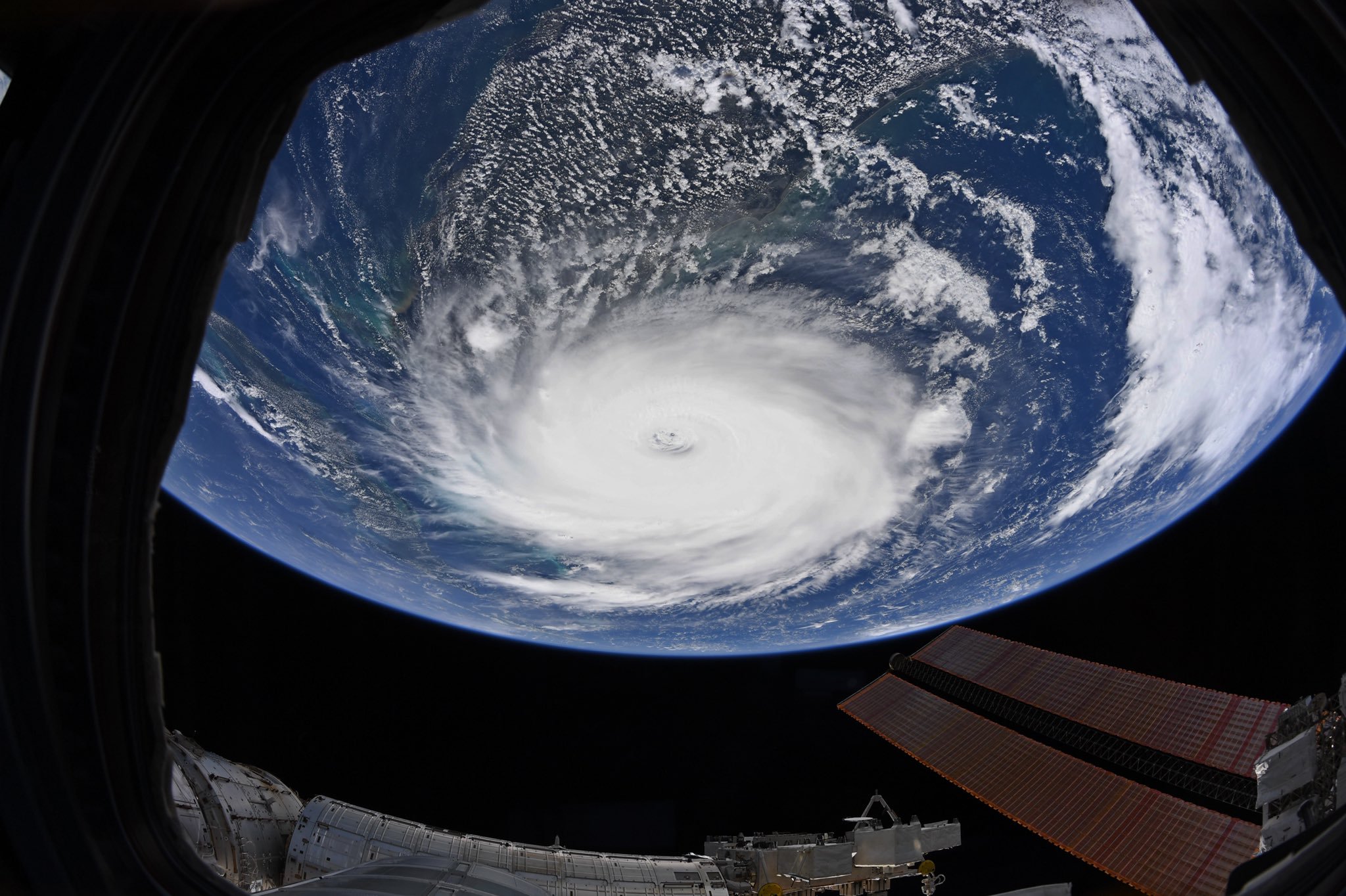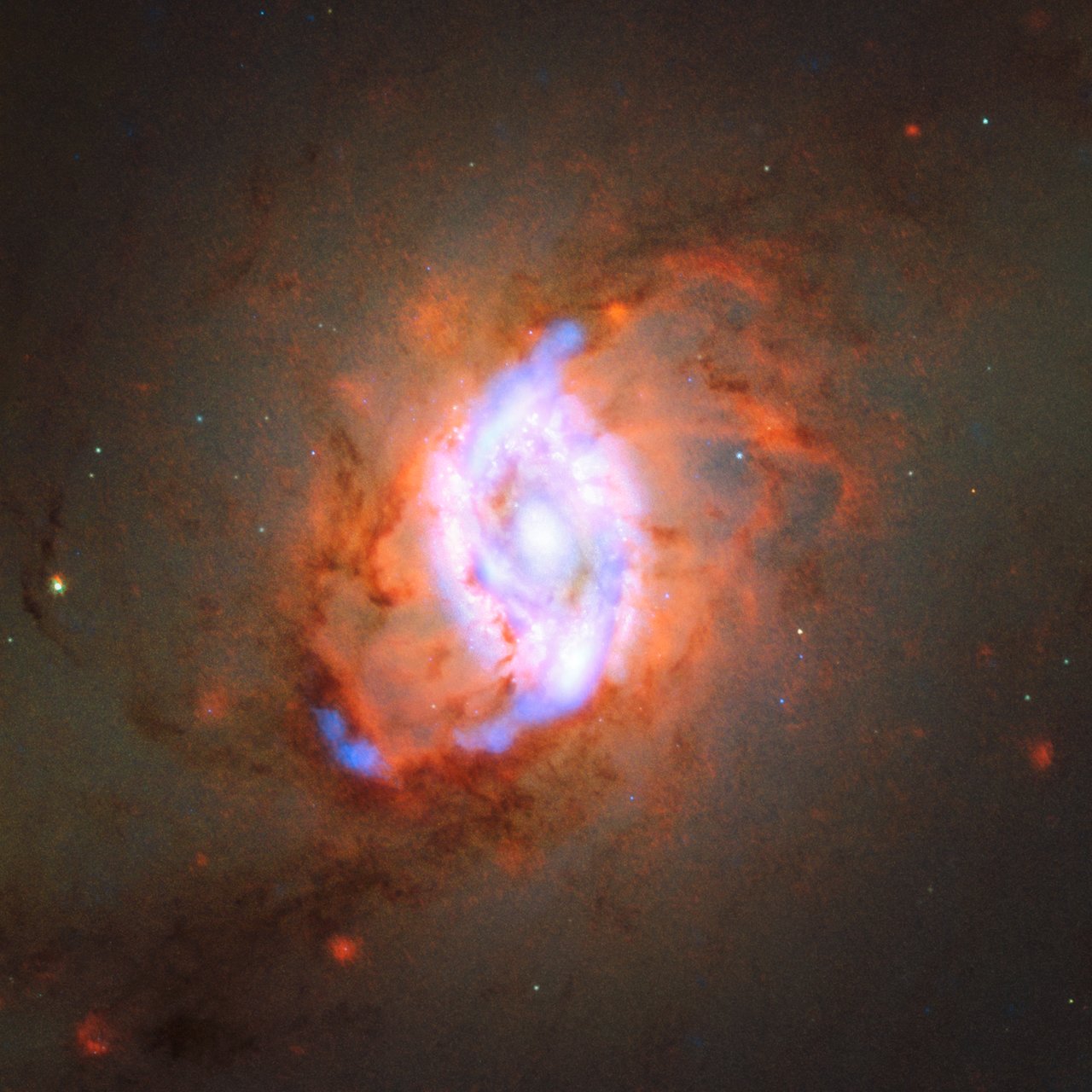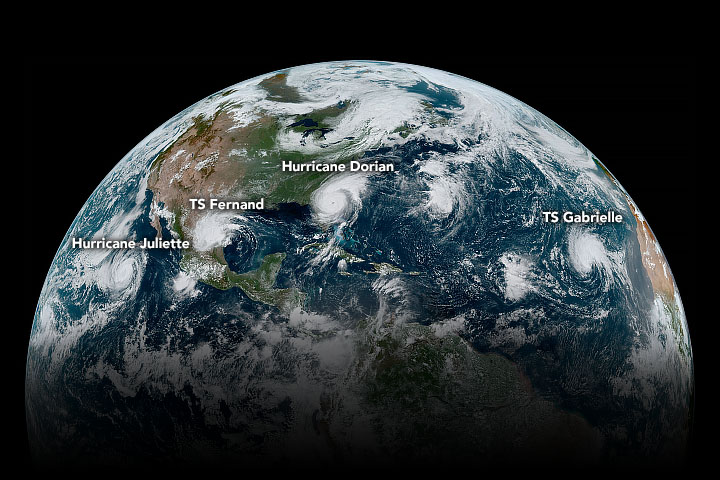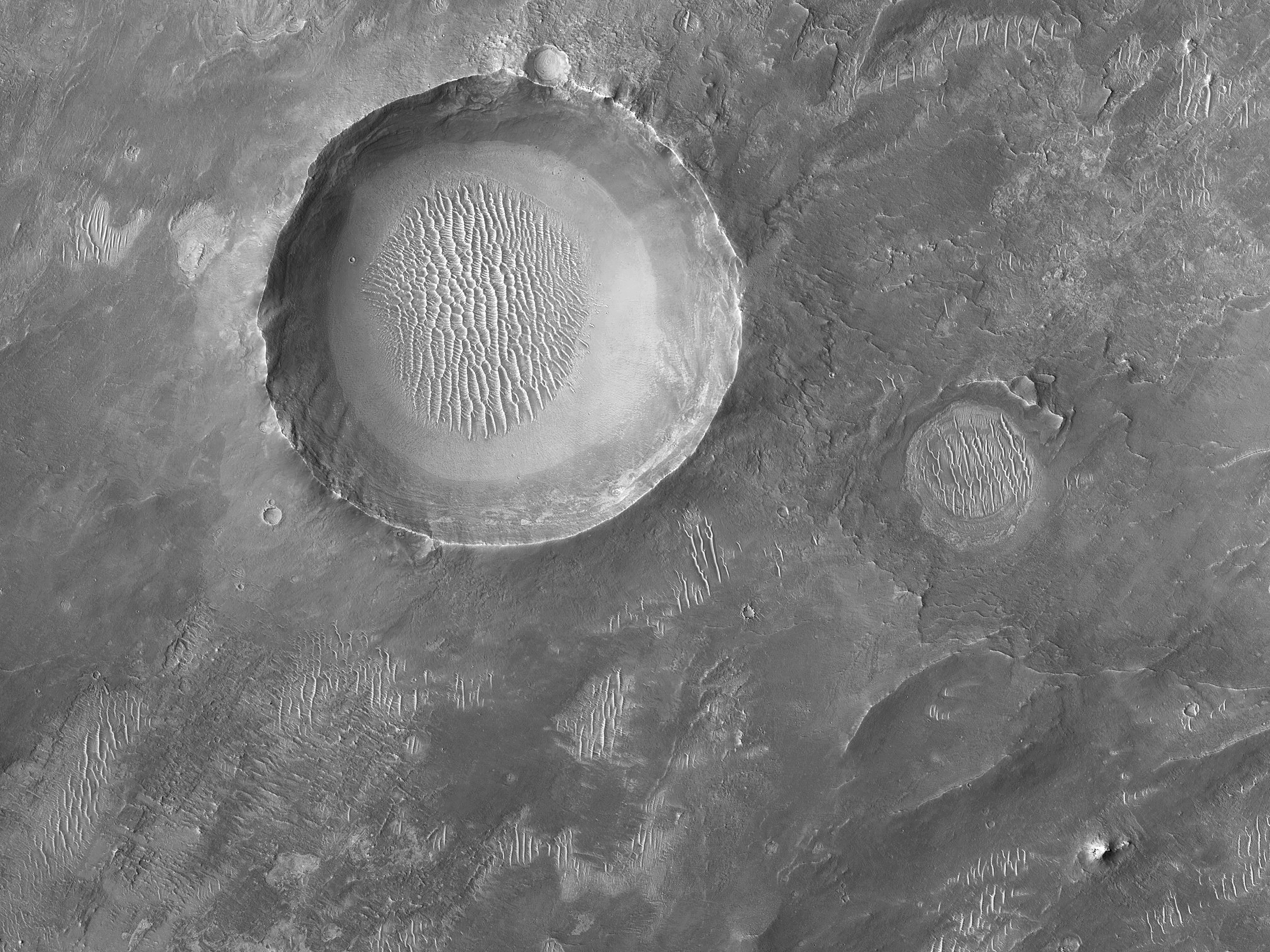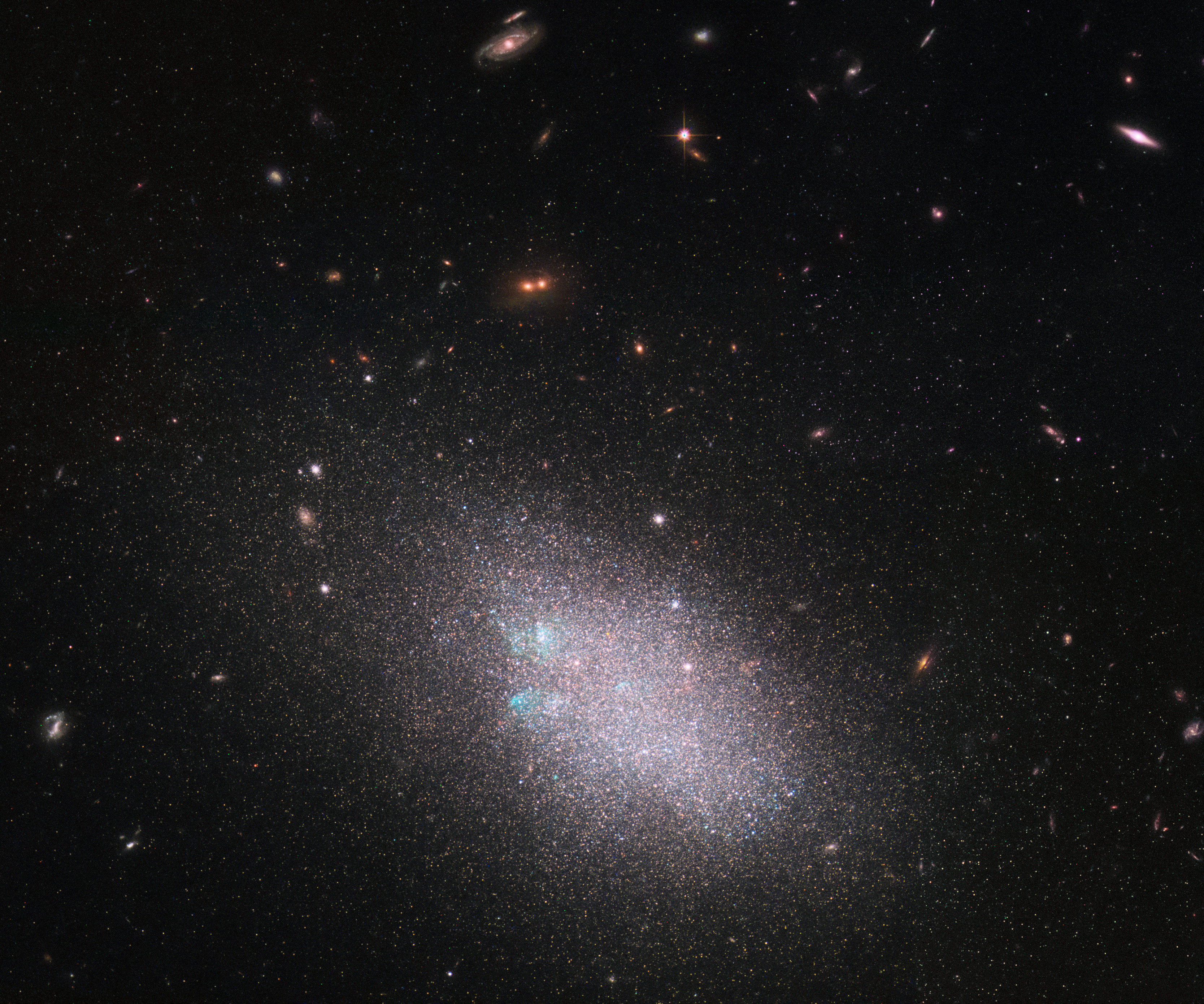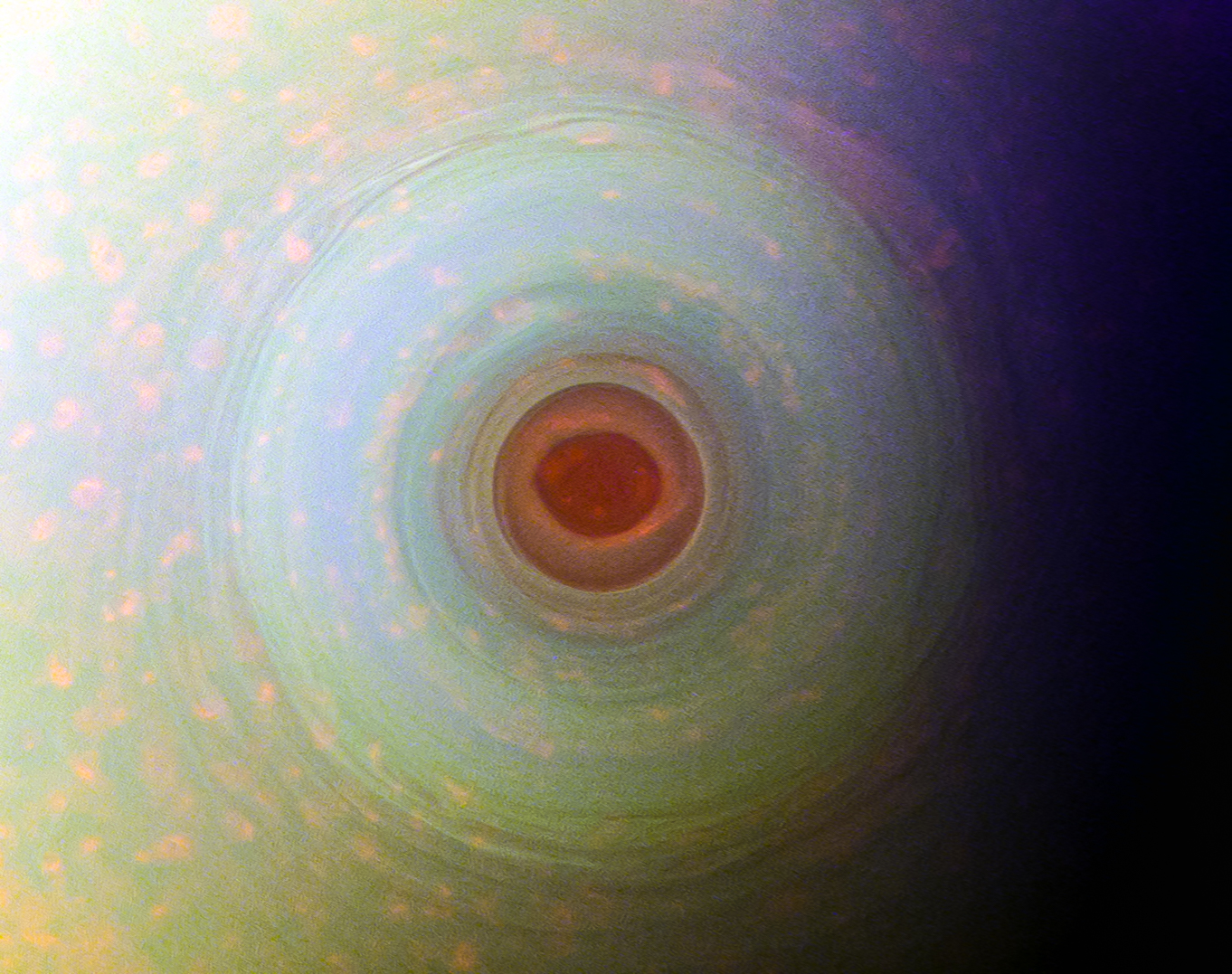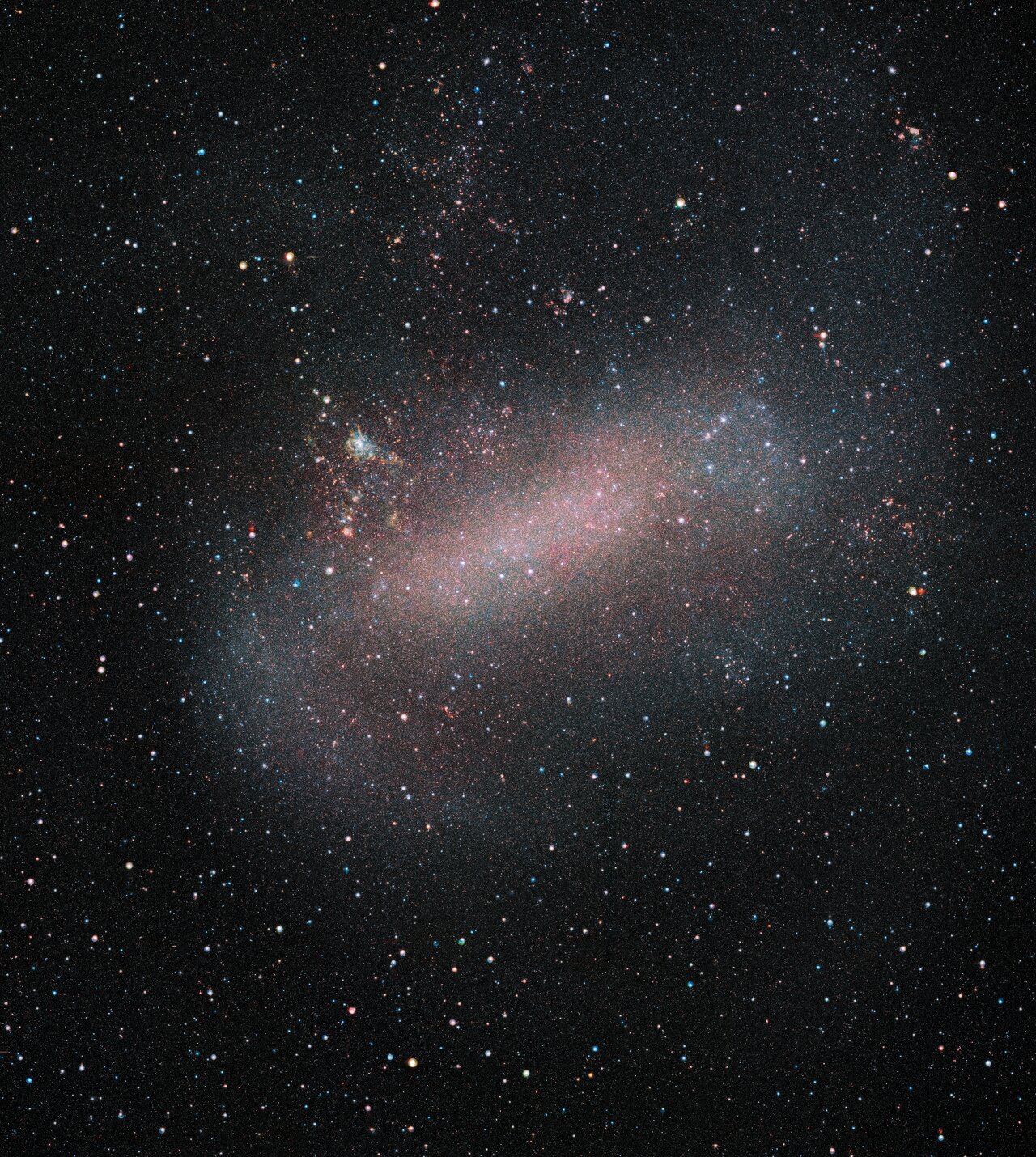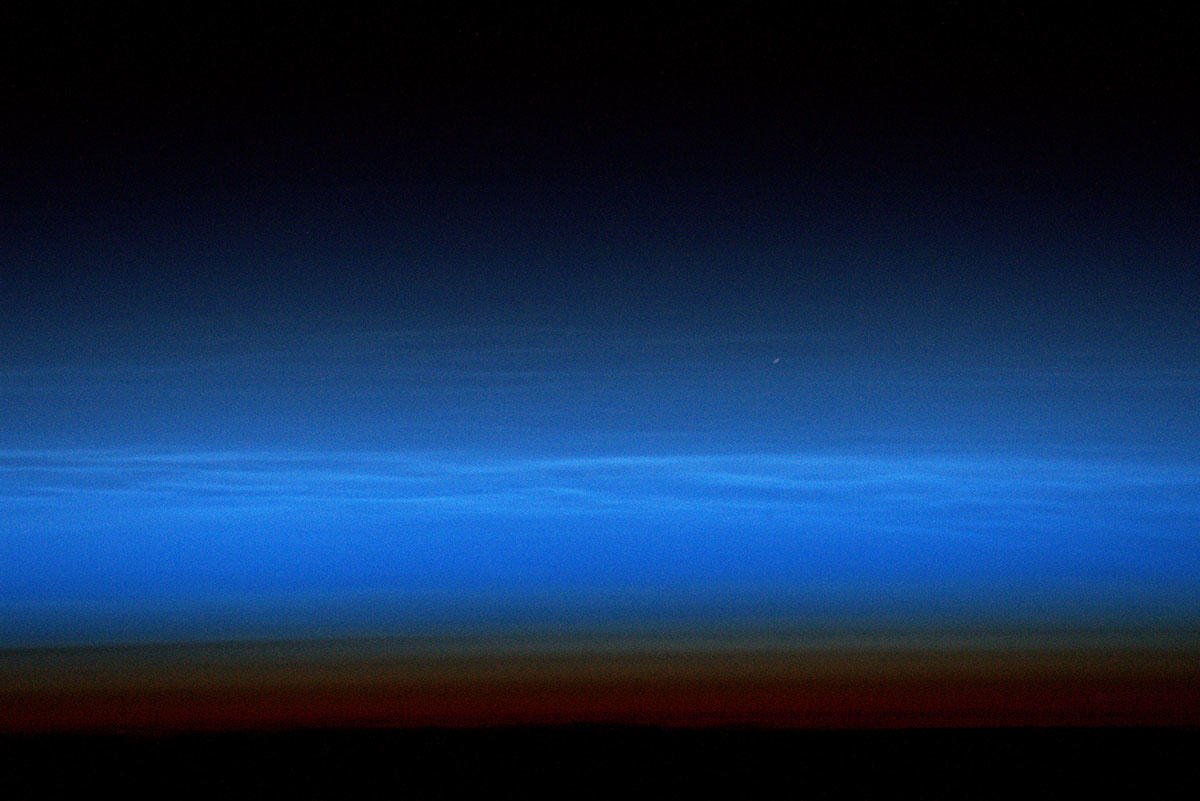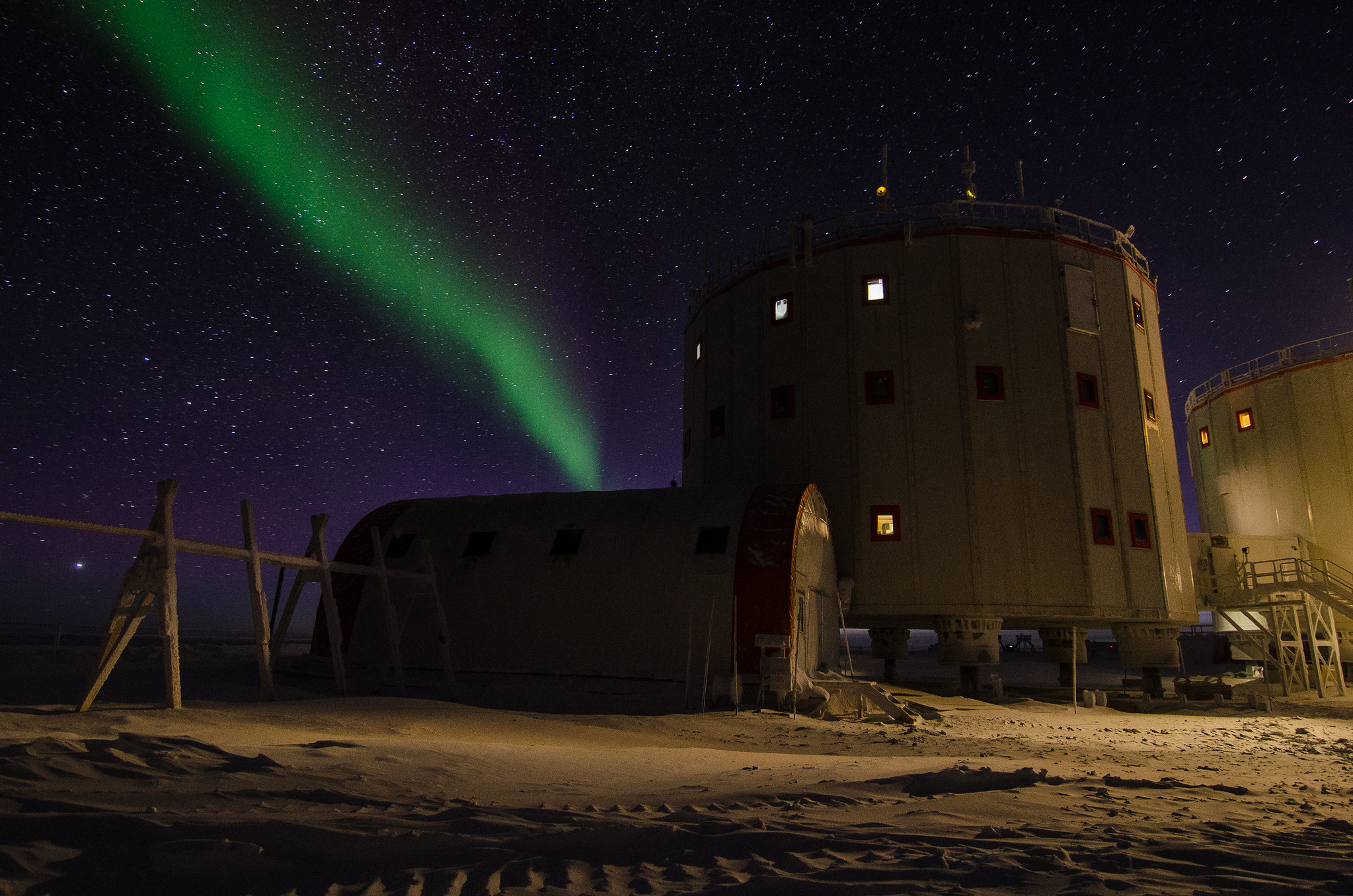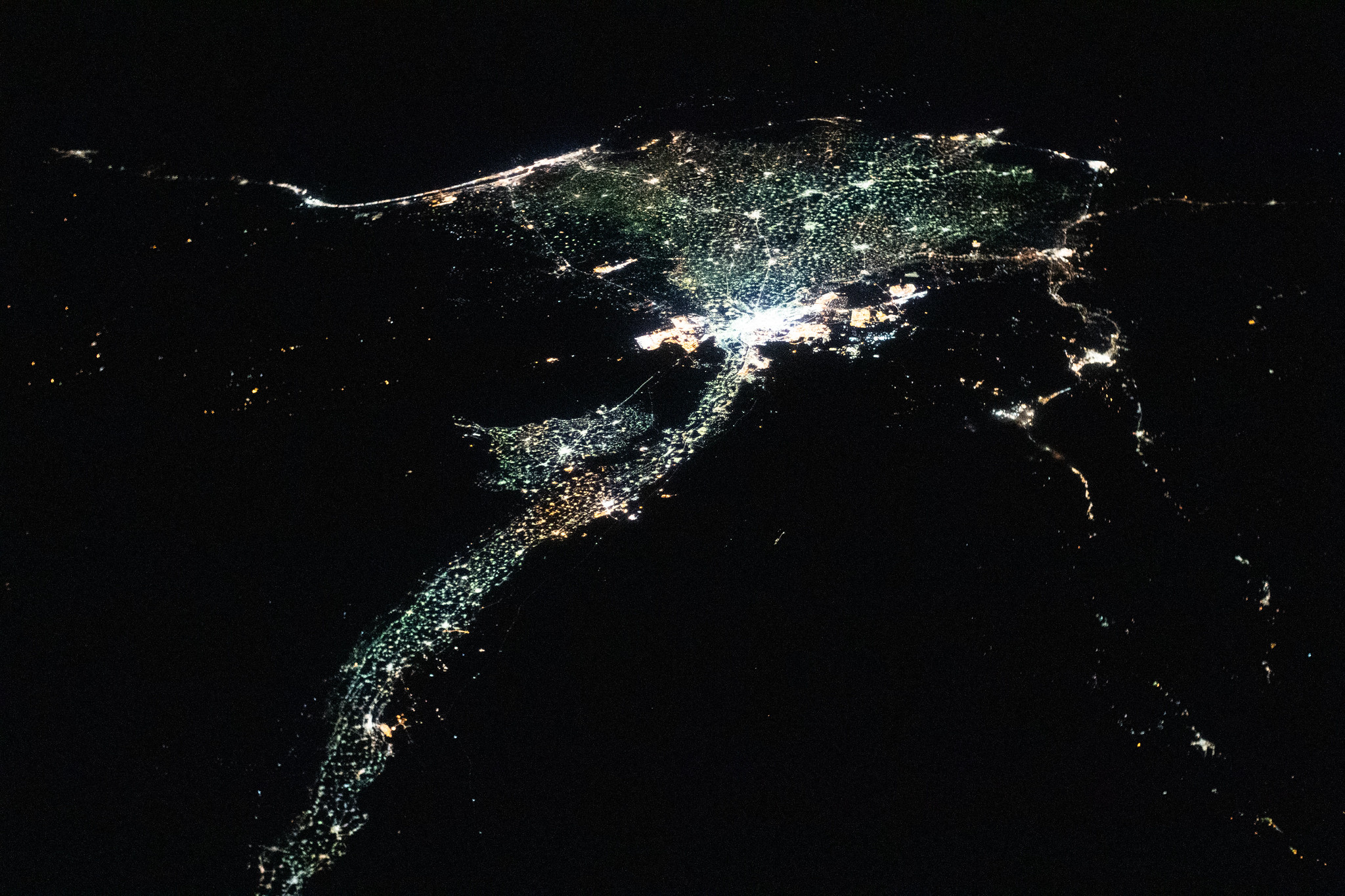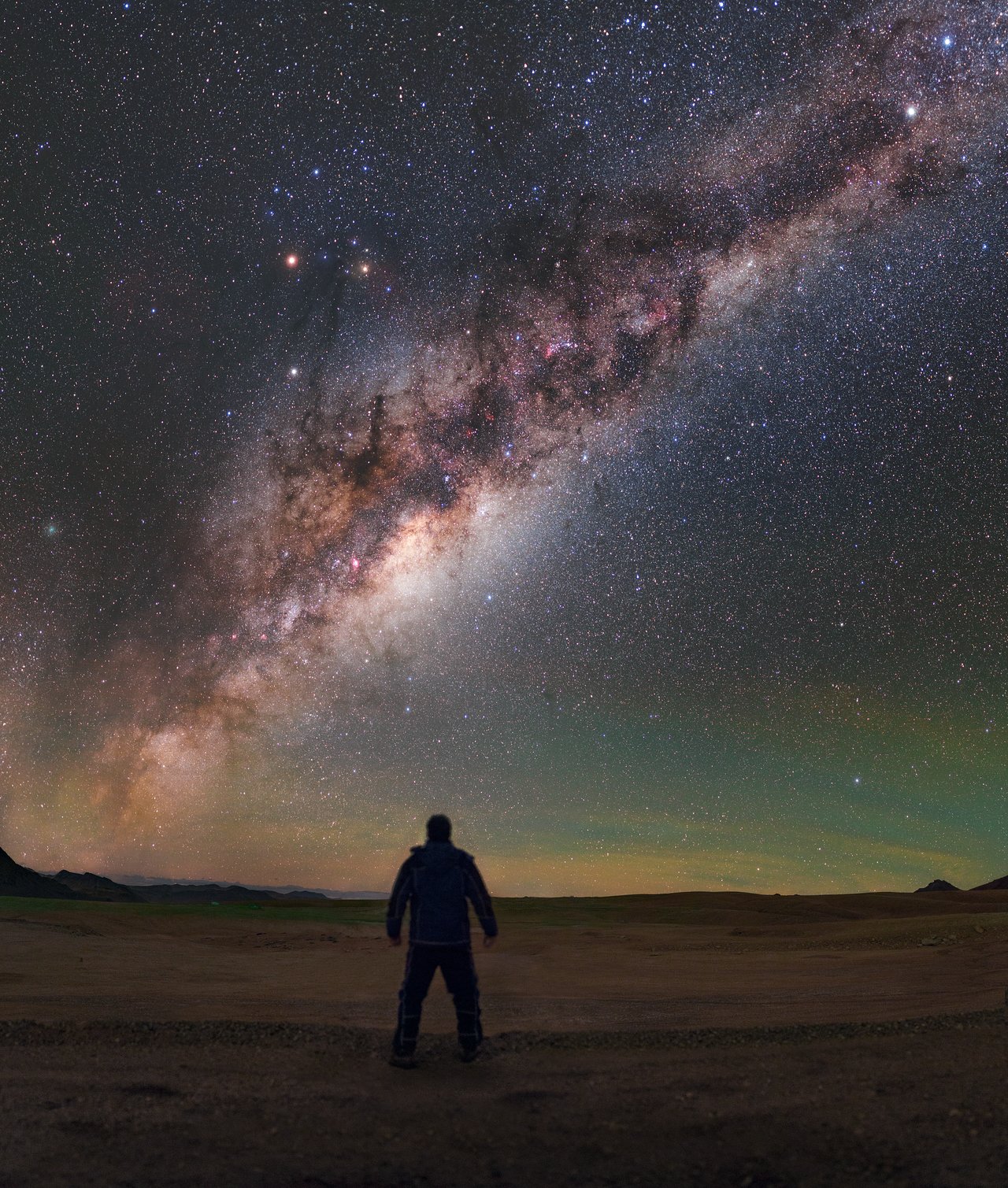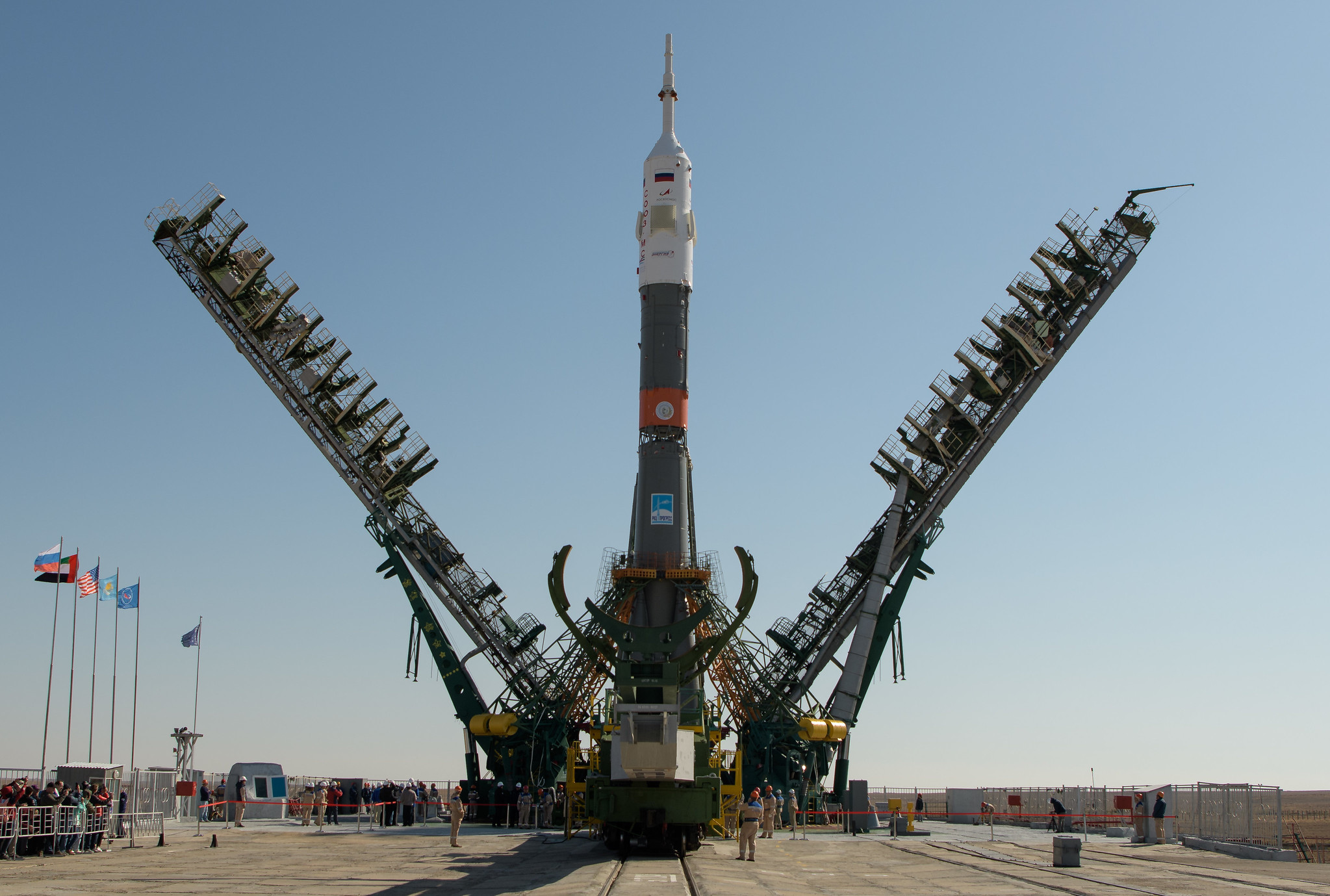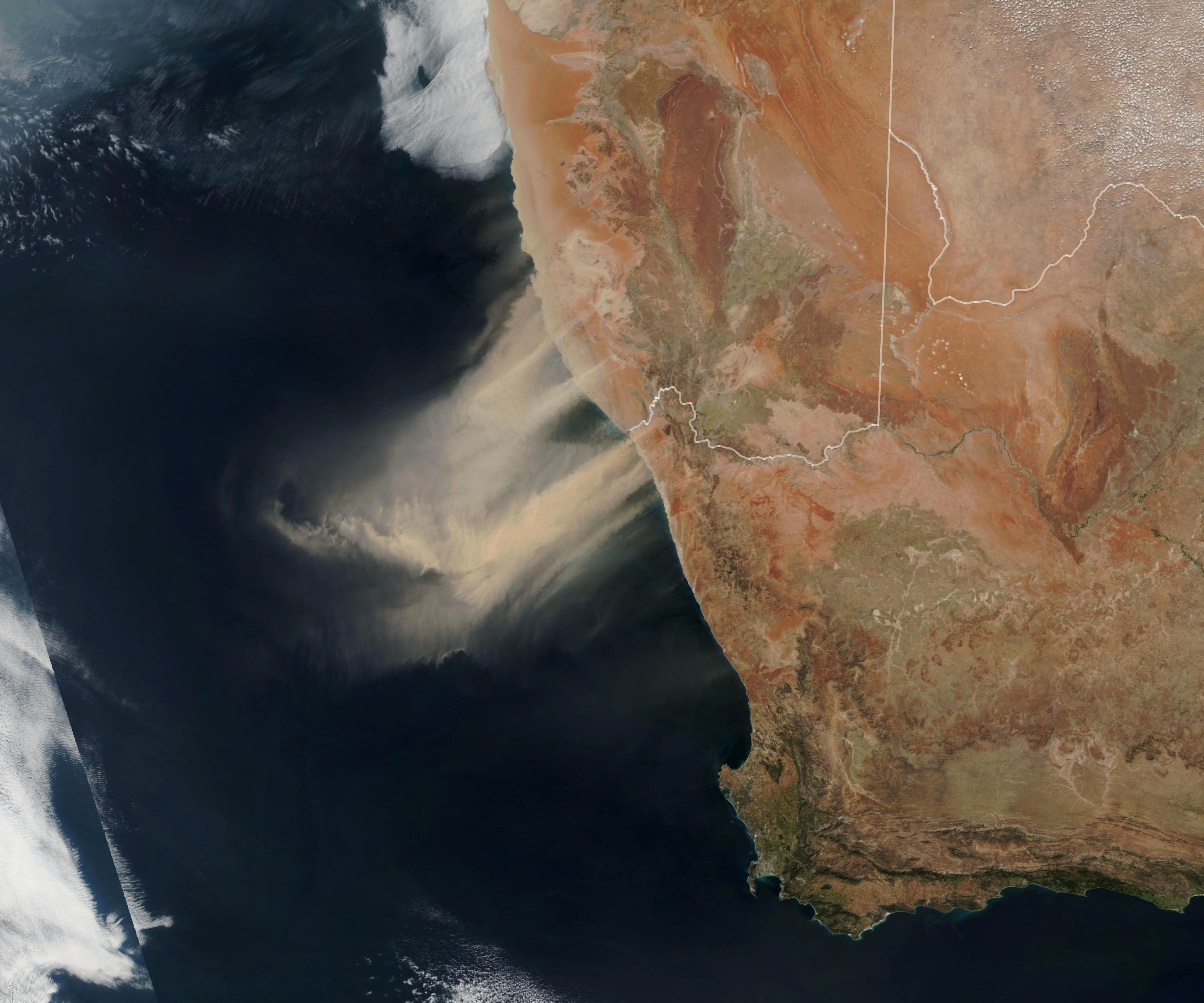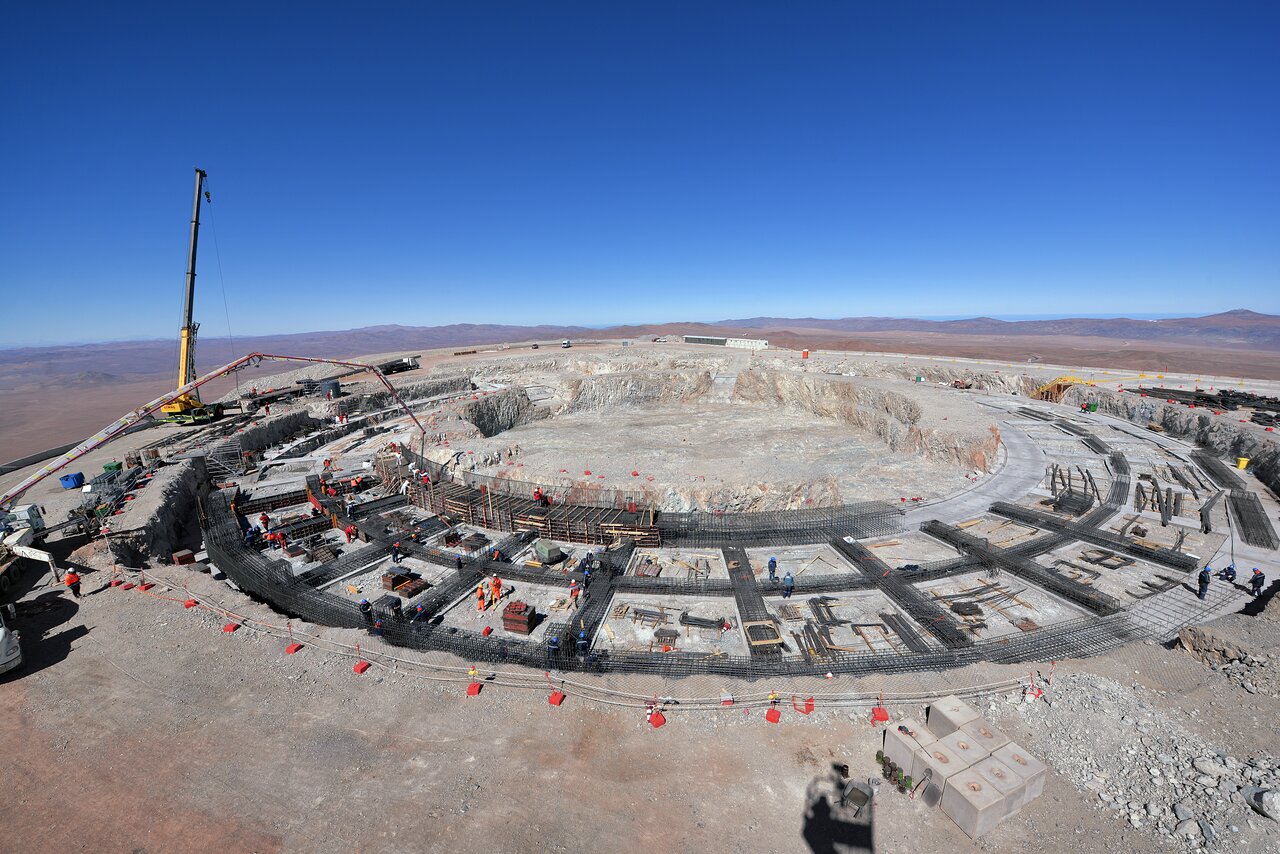Image of the Day 2019 Archive
Explore our Image of the Day 2019 Archives!
September 2019
Hurricane Dorian Seen from Space
Tuesday, September 3, 2019: Hurricane Dorian swirls off the east coast of Florida in this view from the International Space Station. NASA astronaut Christina Koch shared this photo of the storm during the Labor Day holiday yesterday (Sept. 2), when she and her Expedition 60 crewmembers had the day off from work. — Hanneke Weitering
Stellar Feedback in a Barred Spiral Galaxy
Wednesday, September 4, 2019: In this new view of the barred spiral galaxy NGC 3351, massive bubbles of hot gas are erupting from the galaxy's nucleus. Those gas bubbles will affect the formation of new stars in the interstellar medium, or the space between the stars in the galaxy. This process of redistributing mass and energy in star-forming galaxies is known as "stellar feedback," and it is a driving force in galactic evolution.
Also known as Messier 95, this particular galaxy is location about 33 million light years away from Earth in the constellation of Leo, the Lion. Astronomers captured this image using data from the Hubble Space Telescope and the Atacama Large Millimeter/submillimeter Array (ALMA) in Chile. — Hanneke Weitering
Earth Satellite Observes a Chain of Cyclones
Thursday, Sept. 5, 2019: Four tropical cyclones simultaneously churn across the Western Hemisphere in this image from the GOES-16 weather satellite. When GOES-16 captured the data for this natural-color composite on Wednesday (Sept. 4), both Hurricane Dorian in the Atlantic and Hurricane Juliette in the Pacific were Category 2 storms. Hurricane Dorian has since strengthened to a Category 3 storm. Meanwhile, Tropical Storm Fernand has made landfall in northeastern Mexico, and Tropical Storm Gabrielle is gaining strength over the eastern Atlantic. You can see a full-disk version of this image in higher resolution here. — Hanneke Weitering
"Quiet" Caribbean After Hurricane Dorian
Friday, September 6, 2019: In this astronaut's view of Earth from space, bright turquoise features ripple across the seafloor of the Caribbean shortly after Hurricane Dorian passed through the Bahamas. "Just a few miles away from the storm, the Caribbeans are incredibly quiet," European Space Agency astronaut Luca Parmitano tweeted from the International Space Station on Wednesday (Sept. 4). To see photos of Hurricane Dorian from space, check out this Space.com gallery. — Hanneke Weitering
Dunes in Martian Craters
Monday, September 9, 2019: When NASA's Mars Reconnaissance Orbiter flew over Schroeter Crater on the Red Planet, it captured views of some interesting smaller craters within the crater's floor. The two impact craters shown here are located inside Schroeter Crater, which is about 190 miles (300 kilometers) wide, and they contain some intricate dune structures on their own crater floors. These Martian dunes were shaped by wind, much in the same way that dunes form on Earth. — Hanneke Weitering
Hubble Eyes a Small Galactic Neighbor
Tuesday, September 10, 2019: This shimmering swarm of stars, captured by the Hubble Space Telescope, is an irregular dwarf galaxy named UGC 685. While its shape may be difficult to discern at first glance, UGC 685 is an unbarred spiral galaxy. It is located about 15 million light-years away from Earth in the constellation Pisces. — Hanneke Weitering
Breaking space news, the latest updates on rocket launches, skywatching events and more!
9/11 Seen from Space
Wednesday, September 11, 2019: After the Sept. 11 terror attack on New York City 18 years ago today, the United States Geological Survey's (USGS) Landsat 7 satellite captured this view of the aftermath from space. In this image, acquired by the satellite's Enhanced Thematic Mapper Plus (ETM+) instrument on Sept. 12, 2001, a plume of smoke is seen rising from lower Manhattan, where the World Trade Center was destroyed. You can see more satellite and astronaut photos of the plume from space here. — Hanneke Weitering
An Eerie 'Eye' on Saturn
Thursday, September 12, 2019: Saturn's south pole looks a bit unsettling in this infrared view from NASA's Cassini spacecraft. At the center of a 5,000-mile-wide (8,000 kilometers) storm is an eerie red "eye" that looks similar to the eye of a hurricane on Earth. However, this strange vortex doesn't behave in the same way as our Earthly hurricanes, with its cloudy rings rising 20 to 45 miles (30-75 km) above the storm's center. Cassini captured this view from Saturn's orbit in 2006, and citizen scientist Kevin Gill reprocessed it using near-infrared filtered images. — Hanneke Weitering
The Large Magellanic Cloud
Friday, September 13, 2019: The Large Magellanic Cloud (LMC), one of the Milky Way's closest galactic neighbors, gets a new close-up in this image from the European Southern Observatory's VISTA telescope, located at the Paranal Observatory in Chile. VISTA, which stands for the Visible and Infrared Survey Telescope for Astronomy, has been studying this dwarf galaxy and its smaller galactic sibling, the Small Magellanic Cloud (SMC), for the past decade to image the two galaxies in unprecedented detail. The LMC is located about 163,000 light-years away from Earth, while the SMC is slightly farther away at a distance of 200,000 light-years. Both are satellite galaxies of the Milky Way. — Hanneke Weitering
Hubble Eyes a Faint Galaxy in Cetus
Monday, September 16, 2019: The faint galaxy UGC 695 shimmers in deep space in this view from the Hubble Space Telescope. Located 30 million light-years away within the constellation Cetus (The Sea Monster), UGC 695 is considered a low-surface-brightness galaxy, which means that it's even dimmer than the background brightness of Earth’s atmosphere, which makes it difficult to observe. While galaxies like this don't contain as many stars as their brighter counterparts, they are rich with dark matter. — Hanneke Weitering
Noctilucent Clouds Seen from Space
Tuesday, September 17, 2019: A wispy layer of mesospheric clouds illuminates Earth's atmosphere in this photo taken from the International Space Station. European Space Agency astronaut Luca Parmitano tweeted this photo from space, writing, "Mesospheric clouds tinge the sunset, south of the Indian Ocean." Mesospheric clouds, also known as noctilucent clouds, form 47 to 53 miles (76 to 85 kilometers) above Earth's surface, an altitude where water vapor can freeze into clouds of ice crystals. For comparison, the International Space Station orbits at an average altitude of 250 miles (400 km). — Hanneke Weitering
Southern Lights in Antarctica
Wednesday, September 18, 2019: A brilliant aurora appears to rise like a glowing, green smoke plume from Concordia research station in Antarctica in this photo by European Space Agency (ESA) photographer Alessandro Mancini.
"I turn my gaze away from the horizon and dusk, there is a stripe in the sky that is not the Milky Way, at first just white and cloud-like, but there is no doubt — the green hues are visible and the curtain-like waves in the sky are unmistakable," ESA's on-site doctor Nadja Albertsen wrote in a blog post after witnessing the aurora at the remote research station. — Hanneke Weitering
The Nile Delta at Night
Thursday, September 19, 2019: City lights around the Nile River and its delta sparkle by night in this stunning view from the International Space Station. When an Expedition 60 astronaut captured this photo, the International Space Station was flying 255 miles (410 kilometers) above the border between Sudan and Egypt around 1 a.m. local time on Sept. 2. — Hanneke Weitering
A "Slice" of Mars
Friday, September 20, 2019: This view of the Red Planet, which is part of a larger image from the European Space Agency's Mars Express orbiter, shows bright clouds and over the planet's icy north pole contrasted against the dark and dusty plains farther south. Mars Express captured this image using its High Resolution Stereo Camera. Be sure to check out the entire "slice" of Mars here. — Hanneke Weitering
"Man Meets Milky Way"
Monday, September 23, 2019: A skywatcher gazes up at the Milky Way galaxy's dusty core in this glittering photo taken from the Chajnantor plateau in Chile's Atacama Desert. This plateau is one of the highest and driest places on Earth, which makes it a great location for stargazing. For that reason, it was chosen to be the home of the European Southern Observatory's Atacama Large Millimeter/submillimeter Array (ALMA). — Hanneke Weitering
Soyuz Rocket Prepped for Launch
Tuesday, September 24, 2019: The arms of a mobile gantry close around the Soyuz rocket that will launch three Expedition 61 crewmembers to the International Space Station, shortly after the rocket was erected on the pad at the Baikonur Cosmodrome in Kazakhstan. On Wednesday (Sept. 25), this rocket will launch the Soyuz MS-15 spacecraft with NASA astronaut Jessica Meir, Russian cosmonaut Oleg Skripochka and Hazza Ali Almansouri, the first astronaut of the United Arab Emirates. — Hanneke Weitering
Crewed Soyuz Spotted from Space
Wednesday, September 25, 2019: A Soyuz spacecraft carrying three Expedition 61 crewmembers approaches the International Space Station in this incredible shot by NASA astronaut Christina Koch, who captured this view from a window of the orbiting laboratory. The crew lifted off on a Russian Soyuz rocket this morning and are expected to arrive at the space station at at 3:45 p.m. EDT (2045 GMT). — Hanneke Weitering
Giant Dust Storm Blows Over Africa
Thursday, September 26, 2019: The Suomi NPP weather satellite captured this view of an enormous dust storm in southern Africa yesterday. Coastal towns watched as the sky turned red from the thick plumes of dust and sand that rose into the air, and strong winds pushed those winds offshore into the Atlantic Ocean.
Suomi NPP, which is operated jointly by NASA and the National Oceanic and Atmospheric Administration (NOAA), watched the dust storm in action when it flew over the scene at 2:25 p.m. local time (1225 GMT). Areas affected by the storm were located north and south of the Orange River, which forms part of the border between Namibia and South Africa, NASA officials said in a statement. — Hanneke Weitering
A Galactic "Smudge"
Friday, September 27, 2019: What may look like a big, bright smudge in this Hubble Space Telescope image is the dwarf galaxy Messier 110. Located in the Andromeda constellation, it is a satellite of the spiral-shaped Andromeda galaxy. Messier 110 doesn't have that same spiral structure, but rather is a smooth and featureless structure. But Messier 110 is not the only strange blob in this image; near the center of the frame is a dark splotch, which is a cloud of interstellar dust and gas. Another one of these dark clouds appears just above the bright core of Messier 110. — Hanneke Weitering
Extremely Large Telescope Under Construction
Monday, September 30, 2019: In the remote Chilean Atacama Desert, the European Southern Observatory is laying the foundation for what will soon be the largest ground-based telescope in the world. Named the Extremely Large Telescope (ELT) will have a primary mirror that measures 129 feet (39.3 meters) in diameter, a 14-foot (4.2 m) secondary mirror and a 12-foot (3.75 m). Workers are currently building the foundation for the enormous observatory, which will have a dome-shaped enclosure measuring 243 feet (74 m) tall. — Hanneke Weitering
Can't find the date you're looking for? It may have been a weekend or holiday, when we don't normally update our Image of the Day.
Click 'NEXT PAGE' below for October >

Space.com is the premier source of space exploration, innovation and astronomy news, chronicling (and celebrating) humanity's ongoing expansion across the final frontier. Originally founded in 1999, Space.com is, and always has been, the passion of writers and editors who are space fans and also trained journalists. Our current news team consists of Editor-in-Chief Tariq Malik; Editor Hanneke Weitering, Senior Space Writer Mike Wall; Senior Writer Meghan Bartels; Senior Writer Chelsea Gohd, Senior Writer Tereza Pultarova and Staff Writer Alexander Cox, focusing on e-commerce. Senior Producer Steve Spaleta oversees our space videos, with Diana Whitcroft as our Social Media Editor.
